25 Best IoT Wearables to Follow
Connected wearables are one of the most adopted IoT systems for personal use. It’s been predicted that the total number of wearable devices will exceed 1 billion by 2022.
The fast expansion of IoT wearables can be explained by a number of reasons. First of all, connected wearables are mostly affordable and easy to use devices, which makes them perfect for IoT business opportunities. Such things as a fitness bracelet, smartwatch or training shoes are basically the things people have been using for ages, only these ones come with perks.
Another reason is the extraordinarily high number of startups and projects emerging in this domain. IoT wearables market is growing exponentially, and the initiatives like Intel’s Make it Wearable encourage these dynamics.
Let’s see what’s happening in this space and learn about some hot startups in this market.
Table of Contents
Today, there’s hardly any industry unaffected by IoT and wearables. Originally, this technology was in the focus of sport and healthcare professionals. The idea of tracking people’s vitals as well as body performance data kick-started the era of fitness trackers and health monitors.
Later, the development of IoT across basically every domain helped wearables spread in different areas—manufacturing, retail, banking, tourism, gaming, entertainment and more. Here are some of the outstanding examples worth watching.
Raiing
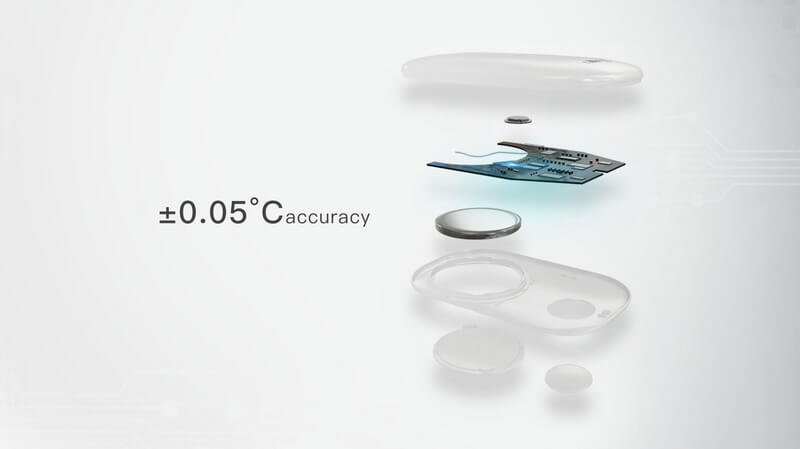
Something as simple as measuring temperature can be a real issue when a patient is newborn or post-op. Raiing produces a highly-appraised fully certified (FDA, CE, ISO, CFDA) wearable thermometer for continuous core temperature measurement, iTermonitor, which can solve this problem.
Sensor-based, it enables non-invasive temperature monitoring, continuously collects data on patient’s conditions, builds trend charts, integrates with EMRs and sends actionable notifications to care providers for a prompt reaction.
CYCORE

CYCORE is an IoT wearable system of vitals monitoring created for head and neck cancer patients who undergo radiotherapy (RT). The system uses sensors to measure key clinical conditions, combine it with patients’ reports and shares the insights with healthcare providers in real time.
According to the study, people using CYCORE during RT and their caregivers get a better grip on the usual side-effects and symptoms during this procedure—mucositis which leads to severe dehydration and often hospitalization. As a result, people are registered to get more timely and precise care and end up with better outcomes and quality of life during cancer treatment.
Bigfoot Biomedical
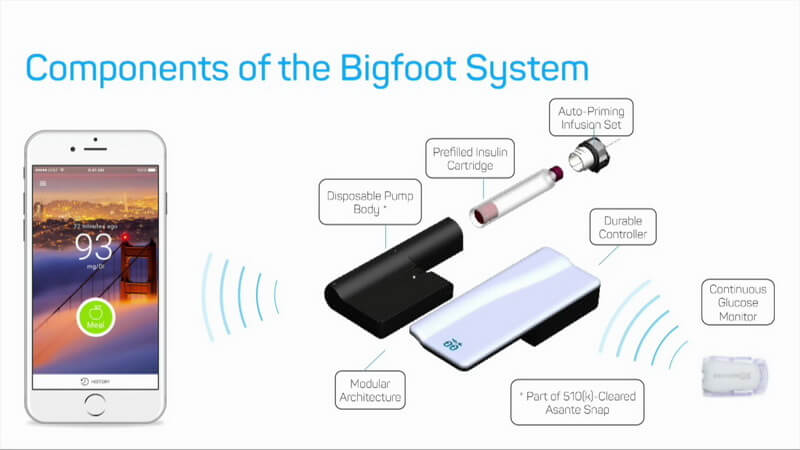
Bigfoot Biomedical has built a closed-loop system for optimized and automated insulin delivery for the people with insulin-requiring diabetes. In itself, this type of diabetes management entails a complex of time-consuming measures and continuous alert.
Bigfoot Biomedical connects IoT-based wearables for real-time glucose measurement, data processing engine, personalized dosage calculation and insulin delivery into one system to make the whole process seamless and at the same time reliable for users with different diabetes conditions. For these people, IoT wearable technology makes a lifetime necessity of diabetes management easier and more accessible.
Boomlife
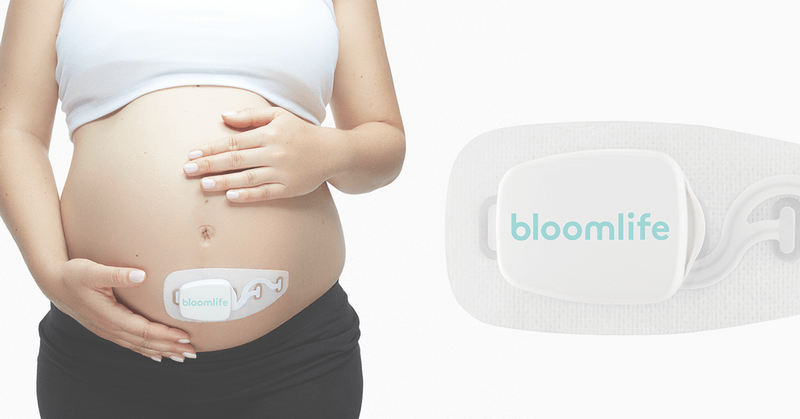
The applications of IoT wearables in healthcare are diverse and focus on different categories of patients. Boomlife, for example, is a contraction monitoring wearable designed for pregnant women. The startup provides it for rent rather than offers to buy and discard after the baby is born.
This IoT wearable system is a hands and wire free monitor and app for tracking the womb’s activity starting from the 31st week of pregnancy. It helps women tell labor contractions from Braxton-Hicks contractions and effortlessly deal with the timing. At the same time, doctors get quality insights on the history of a pregnancy course and can make better decisions on care and labor procedures.
Propeller Health
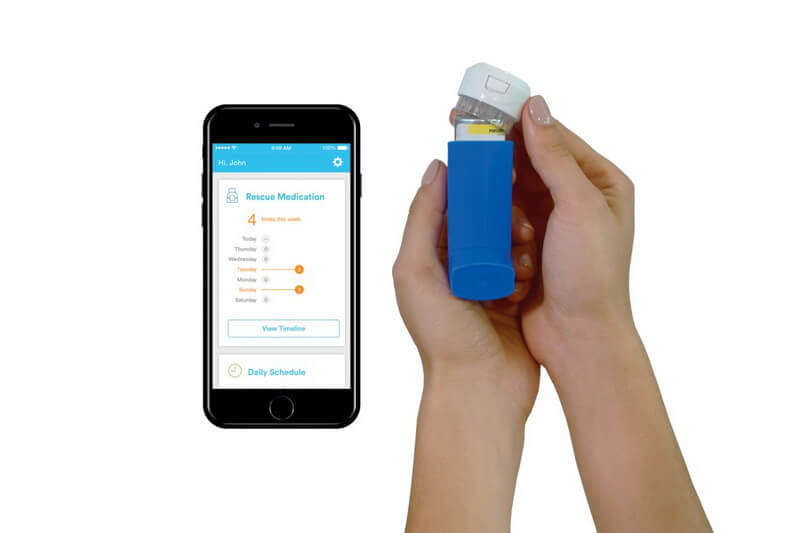
Just like Bigfoot Biomedical, Propeller Health helps make the lives of patients with chronic diseases easier. The company has recently raised $20m for its wearable sensor system. It is attached to inhalers to collect data on the medication use and provide asthma and COPD patients and their caregivers with valuable insights.
The data collected by the sensor helps better understand the symptoms and causes of seizures and encourages people to correct their lifestyle and activity and improve their medication adherence.
Learn more
About the application of digital technology in healthcare
DorsaVi
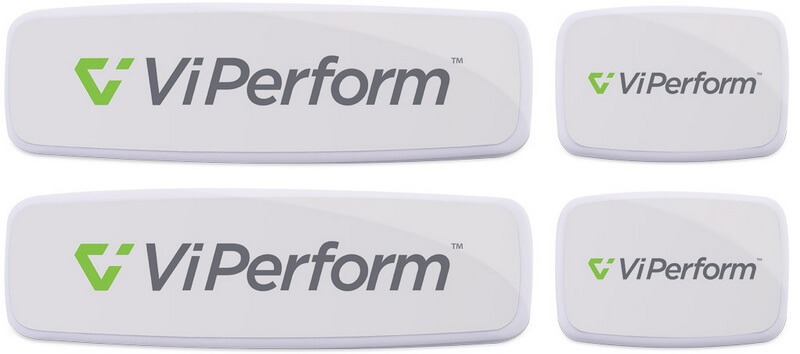
Among other IoT applications, wearables are, probably, the most popular in sport and fitness. DorsaVi offers a range of sensors for professional athletes regardless of the type of sport.
ViPerform sensors are attached to core positions such as knees or feet and collect raw data on the performance—leg symmetry, ground contact time, active and passive range of movement, etc. This data is sent to the system’s advanced algorithms that process it and build readable insights and visualizations on the athlete’s performance. This information then becomes the core of training strategy or sportsmen rehabilitation.
Teslasuit
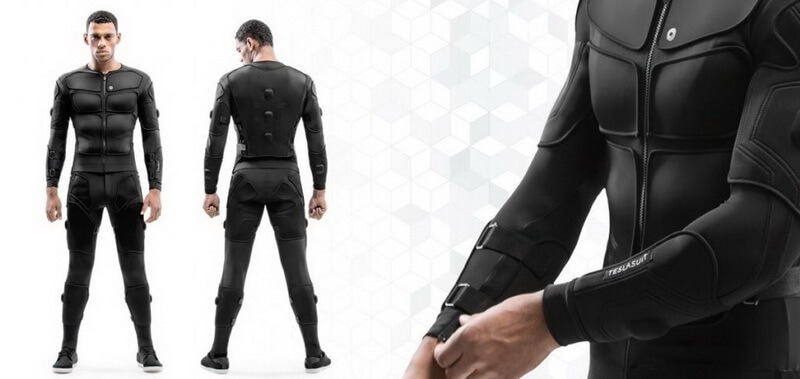
Why attach sensors when you can wear them as a suit? Teslasuit has recently won a Red Dot Best of the Best award and was named the Best Innovator at CES 2019.
The company has designed a connected Teslasuit with diverse functionality. It can read the motion and biometric data, provide haptic feedback and create controlled climate inside the suit. Paired with VR, the suit provides a fully immersive environment.
For athletes, this innovative IoT wearable suit provides the opportunity to study how muscles memory and reflexes are developed, get insights on the performance and training results in real-time. Not to mention practice and rehabilitation capabilities—athletes can train in an immersive environment anywhere and get the same learning experience as if they were training in the field.
Motiv
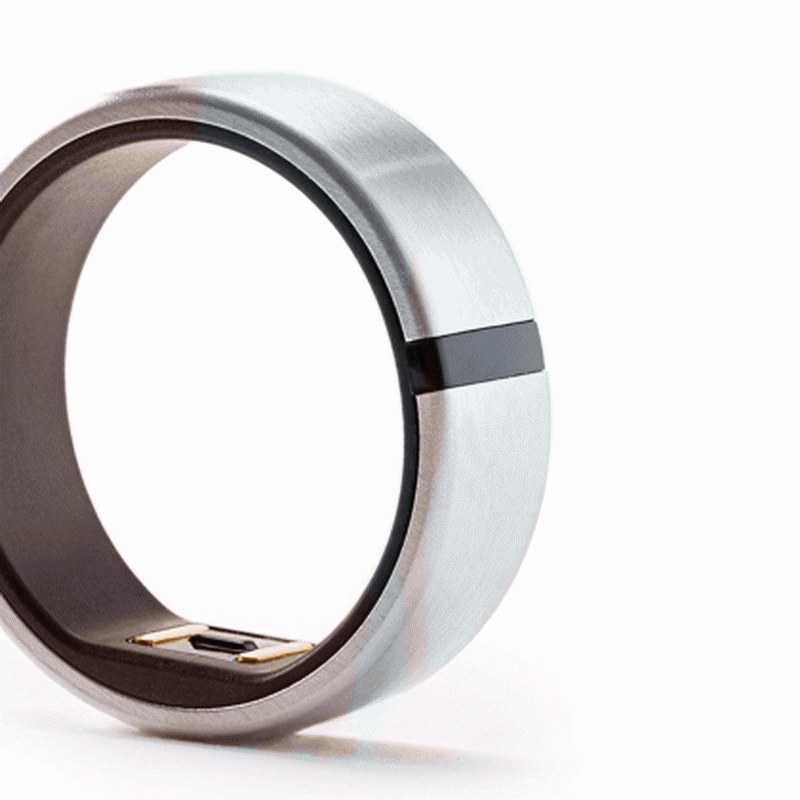
IoT wearable for sport and fitness doesn’t necessarily need to be big a full cover sensor outfit. For very basic health and activity tracking, a lightweight ring is enough.
Motiv ring is relatively new among IoT wearables devices, even though the concept of a smart ring for fitness tracking is known thanks to Ringly and Oura. Motiv has created a sleek minimalistic ring powerful enough to continuously monitor heart rate and collect all basic health metrics such as active minutes and rest time, calories burned, sleep quality, etc. This combination allowed Motiv to receive a good deal of design and innovation awards from Red Dot, CES, the Webby and San Francisco Design Awards.
Doppel
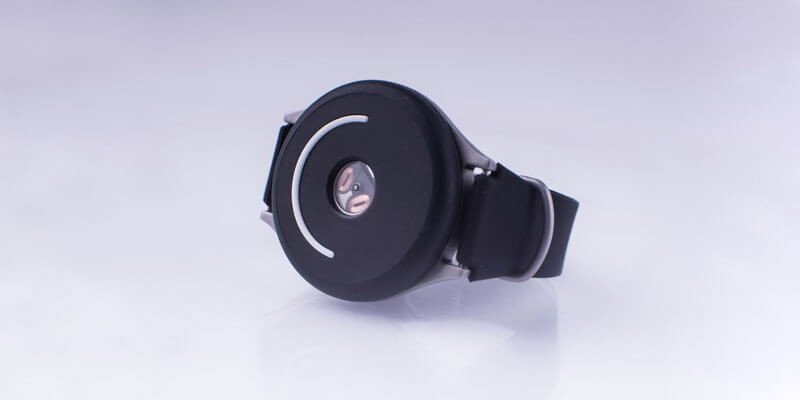
Doppel is one of IoT wearable startups which promises to help you find a peace of mind. Unlike traditional smart bracelets, Doppel wristband is built with the focus on your wellbeing and relaxation. It doesn’t collect data on steps or activity—only heart rate and skin conductance response.
The science behind it relies on the findings of psychology and neuroscience research. The wristband gives you a heartbeat-like silent vibration either in certain conditions or by your command. This rhythm helps reduce stress and increase focus, though it’s barely tangible. Positive effects (reduced anxiety, increased positive emotional state) of Doppel wristband usage was actually tested and proven. See the study published in Nature Scientific Reports journal.
Solos
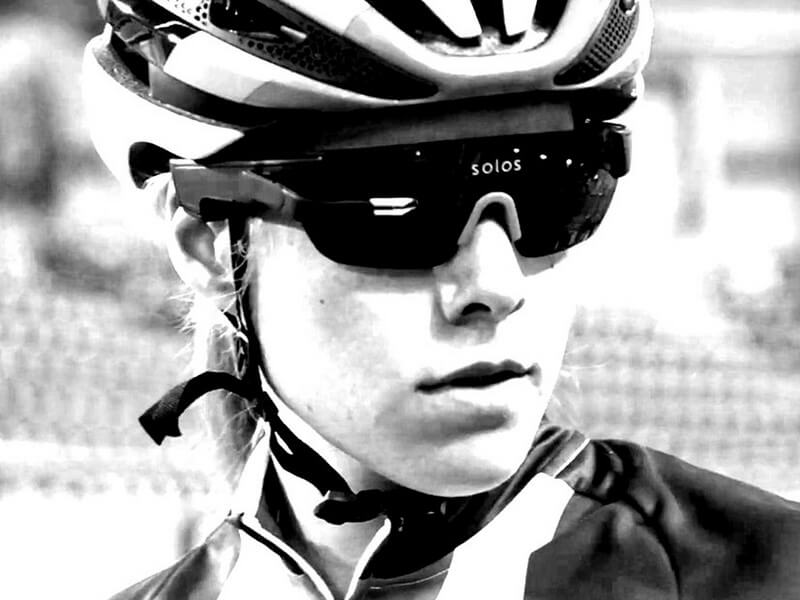
Smart glasses by Solos Wearables have been on the IoT wearable market for a while, and have already been tested and proven by the US Olympic Cycling team.
Originally designed for cyclists, Solos glasses also work good for runners and provide a wide range of features including vitals monitoring, route navigation, performance measurement and analytics. Among the perks are voice control for hard-free navigation, synch with a popular Strava app and the activation of subscription-based service for professional training routines.
Kronaby and bPay (PingIt)
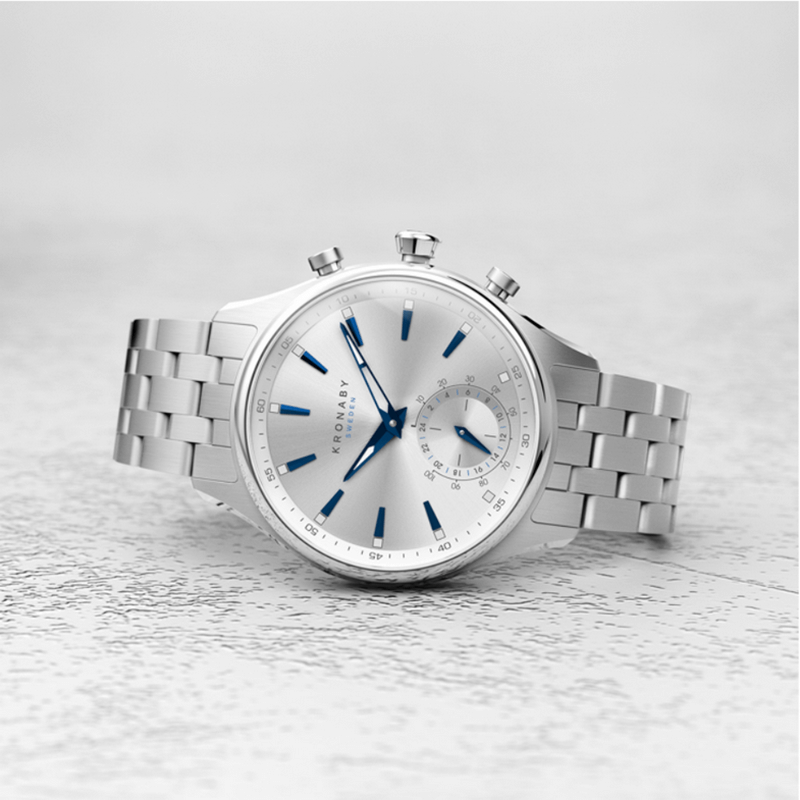
IoT wearables expand the functionality of ordinary objects. Thus, the whole new category of wearables for banking and finance emerge—connected cards, wristbands and even clothes and jewelry that enable easy payments and the management of consumer finances.
For example, a respected Swiss watch brand Kronaby added connectivity to its products, though hasn’t changed its classic designs. Thanks to a startup bPay (now PingIt) technology, Kronaby was able to integrate contactless payment features to its watches and turned a classic Swiss product into a hybrid smartwatch.
Kronaby’s watches are mostly mechanical, although they have a range of smartwatch features such as counting steps or controlling the camera on your phone. Contactless payment feature, however, is implemented fully on the strap. This approach helped the Swiss producer not to overload the functionality and elegant design of the classic watch.
Inamo
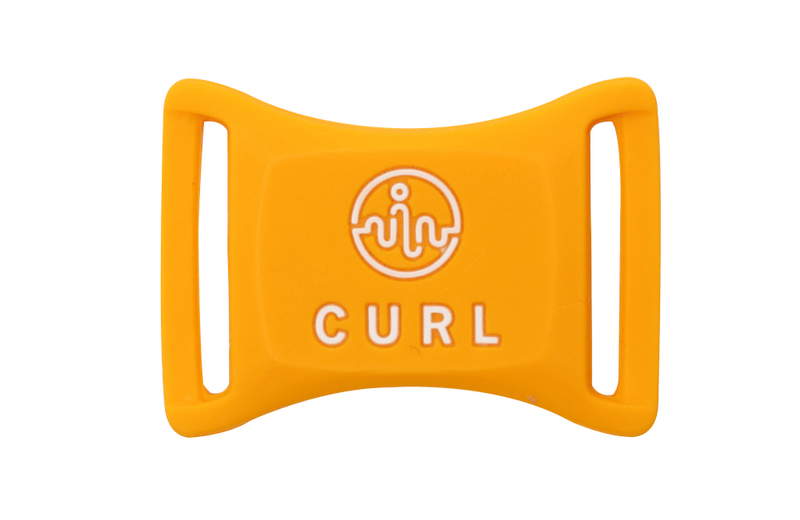
Inamo is another fintech startup that created tiny accessories for fast and easy payment. They work with any system that has a contactless payment sign on.
Curl and Wing are waterproof 30-dollar accessories that can be attached to any watch, wristband, keychain or bag and used for VISA or MasterCard contactless payment anywhere in the US or Australia. You will have to top up your fee-free Inamo account to use the money though. Additionally, these devices collect data on your transactions and allow you to track your financial activity in an Inamo app.
K wearables
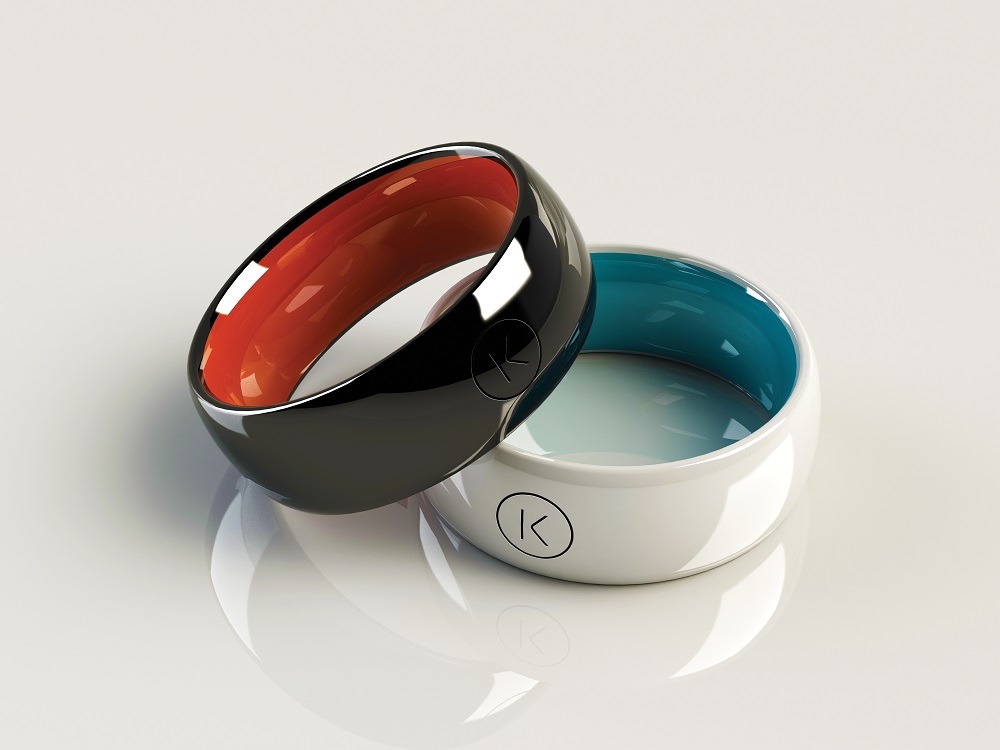
K wearables rebranded from Kerv, which used to produce Kerv payment rings. Today, this is a K Ring, and it could be the future of express payment.
K Ring doesn’t require charging or in-app activation or synch, it’s waterproof and scratch resistant. Powered by Mastercard, it enables the full range of secure contactless payment operations without PINs, signatures or smartphone one-time codes. And by the way, it looks good too.
Nymi
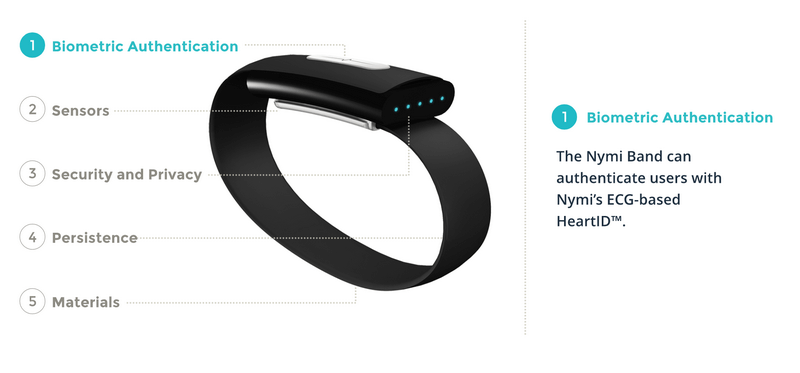
All the previous IoT wearables devices were focused on everyday contactless payment—they are perfect for grocery shopping or everyday coffees, wallet-free purchases on vacations or spending an afternoon in a mall.
Nymi offers an IoT wearable with advanced biometric authentication for more serious transactions. You can think of six figures and more. The system in the Nymi band uses heartbeat sensors for authentication and on-body detection to make sure a wearer is authorized to make a payment. Powerful encryption and data security used for tracing transactions make sure this IoT wearable is compatible with big deals.
Edge
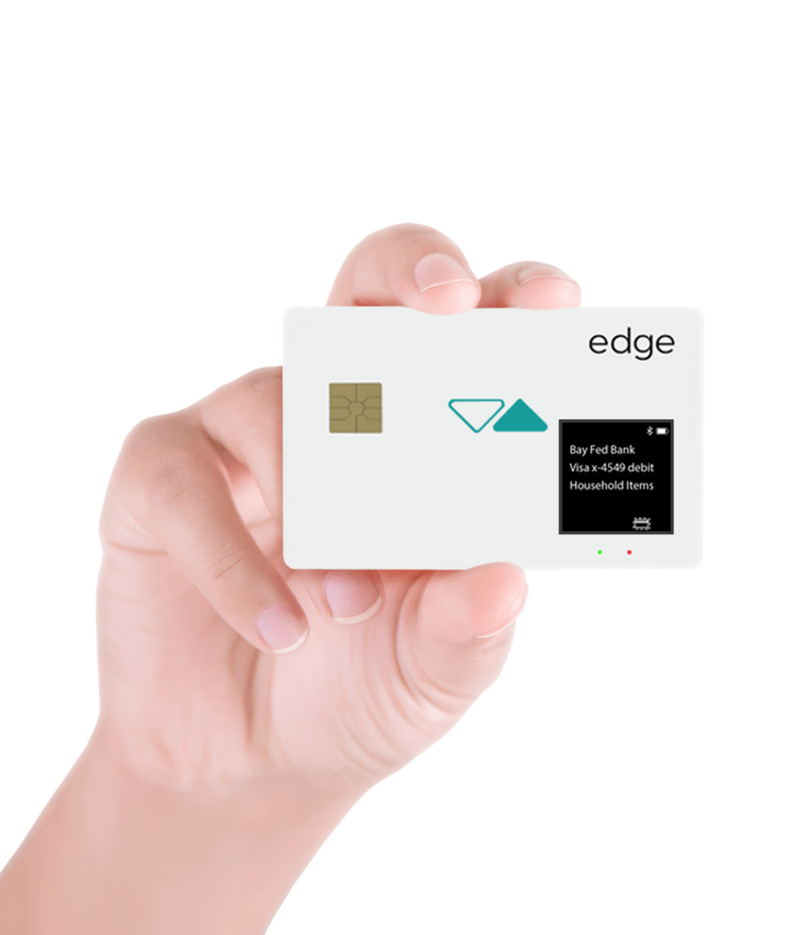
Smart card is one of IoT wearables trends that might have put at risk the existence of brick-and-mortar banking. Instead, it introduced a concept of a digital bank that goes beyond any mobile or online banking features. It allows to make all credit, deposit, loan, peer-to-peer and investment transactions all in one card—a smart card.
Edge is a good example of all-in-one connected cards. It collects all credit, debit, gift and loyalty cards into one for easy transactions in any payment system, connects to a versatile app for real-time activity monitoring and a full range of banking operations and integrates with Edge Cloud Wallet for online shopping on desktop or tablets.
Learn more
About IoT design and development services for different industries
Waverly Labs
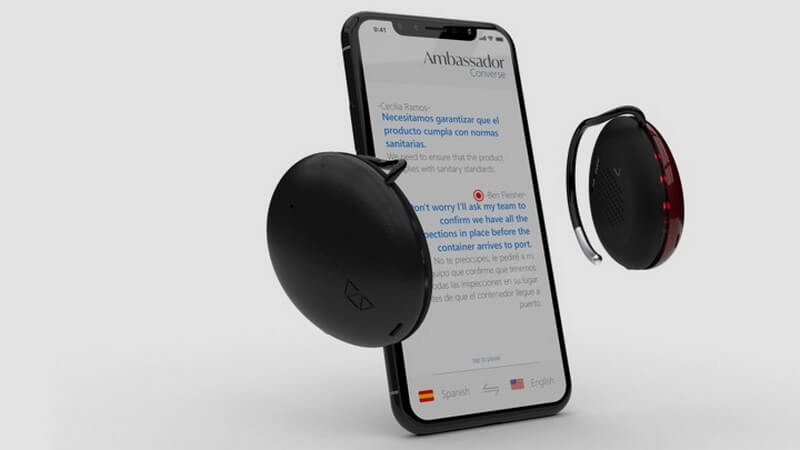
There are different problems solved by IoT wearables, and the language barrier is one of them. Ambassador by Waverly Labs is a two-sided interpreter in the form of an over-the-ear hearable, which works as a solution to this problem. Its performance is impressive, as 35k units have already been preordered and are to be shipped this November.
This device enables travelers to have smooth uninterrupted conversations in more than a dozen languages and 42 dialects from around the world. It is equipped with powerful sensors to detect voice from 8 feet. Additionally, Ambassador earphones are connected to the app for extended functionality—group conversations, lecturing, conference calls, etc.
LEAF
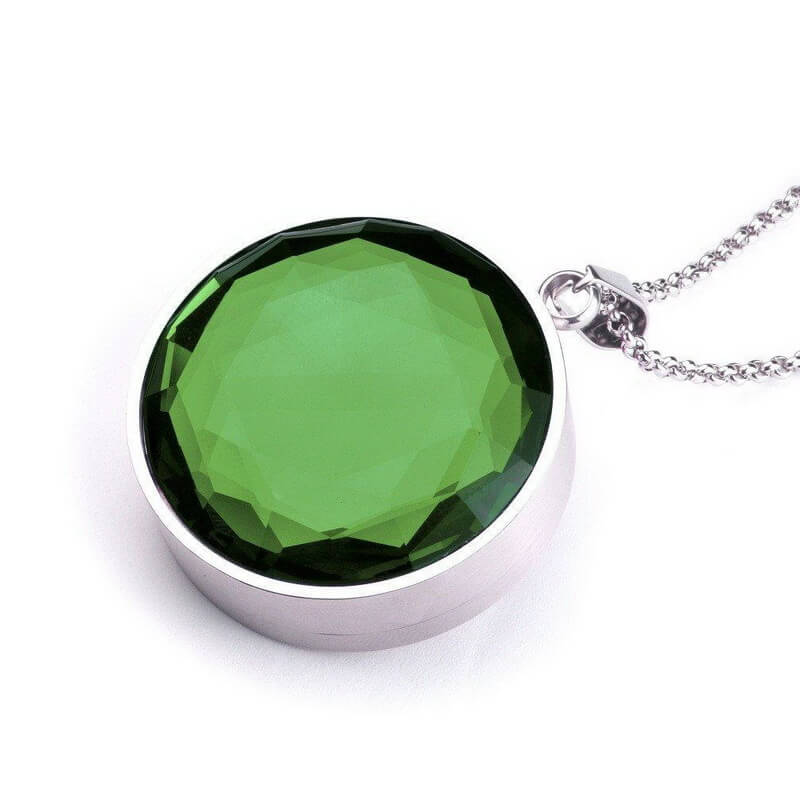
Ambassador helps travelers not to get lost in translation. Leaf’s Safer wearable helps not to get into troubles, or rather get away with ones if they happen.
This piece of smart jewelry combines a location tracker, emergency button and navigation to the nearest hospital or police station. The pendant was designed for those who travel alone and may find themselves in an unsafe situation. In this case, double-clicking on an SOS button immediately sends a notification with the exact location of the user to his or her guardian.
Leaf also provides a version of Safer for kids—a smartwatch with extended functionality including safer zones map and activity tracking.
Cowarobot
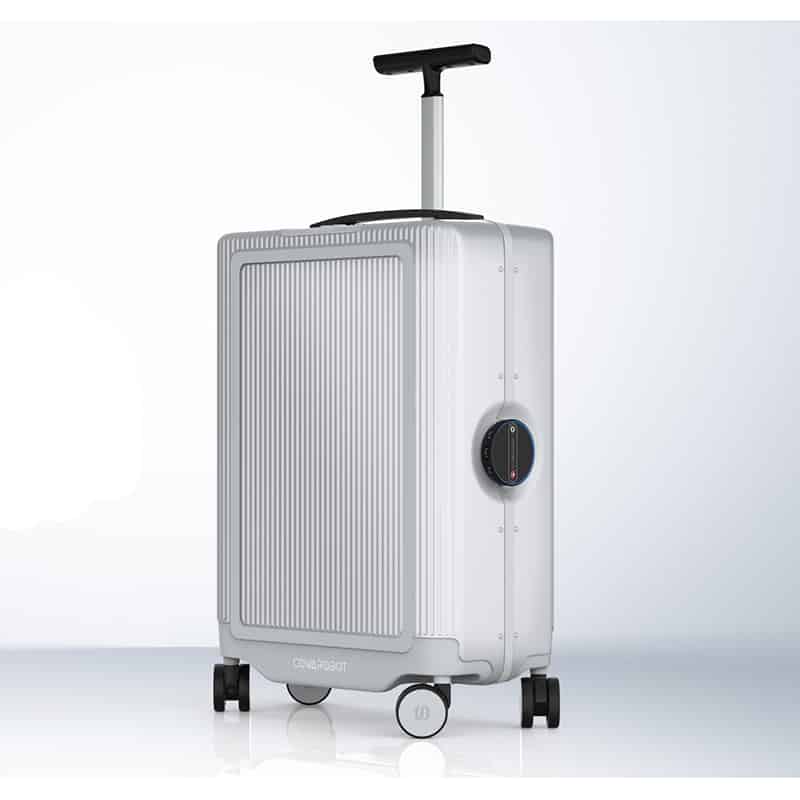
The market of smart suitcases for traveling and business is wide. Some of them are extremely durable and have powerful charging capacity, others stand out for their tracking perks or even ‘self-driving’ capabilities.
Rover Speed by Cowarobot is an AI-powered wearable suitcase that combines it all. It is equipped with radars and camera for autonomous following, AI for smooth moving and obstacle avoidance, hands-free remote control and sensors for security and proximity alarms. This is on the technology part only. High durability, low power consumption, inbuilt power bank and a range of not crucial but lovable features for travelers make Rover Speed one if the best IoT wearables on the smart luggage market.
Guestband
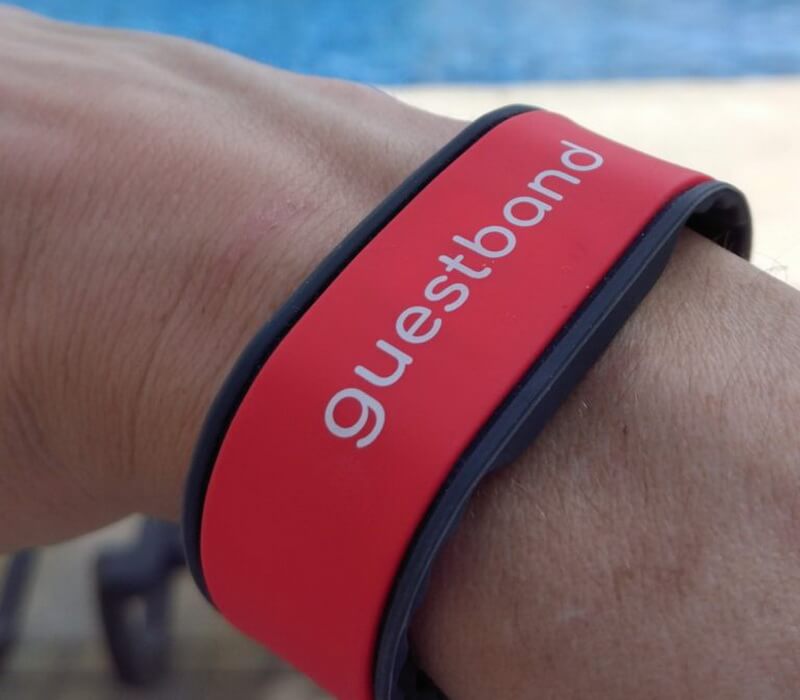
Wristbands are prevalent IoT wearables in every industry, travel is not an exception. Guestband is a good example of how a band for hotel, resort or theme park guests becomes a source of business development and customer experience improvement.
At first sight, Guestband is a regular wristband that has been in use at hotels and swimming pools for years. In reality, it’s a powerful source of valuable information for every decision-maker in the travel industry.
This IoT wearable continuously collects data on guests’ experience and interactions, sends this data for processing and creating important insights. Using these insights, hotel and resort staff and executives can provide better security for guests, personalize guests’ experience and anticipate their needs before they appear.
Oceanmedallion
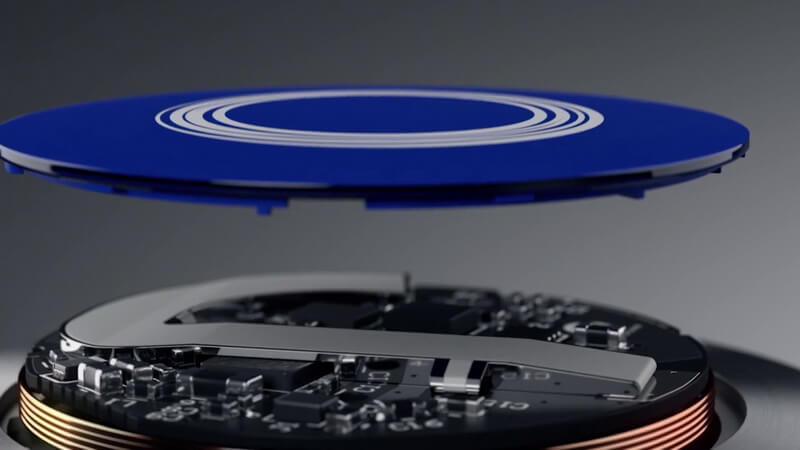
Another smart jewelry for travelers, OceanMedallion was recognized with a CES 2019 Innovation Award for an uncountable number of features for Carnival cruise guests and the crew. The device is a part of a custom xIoT ecosystem focused on providing elevated highly-personalized experience to the guests and delivering insights for the management.
Among the unique capabilities of OceanMedallion are on-ship navigation and remote location sharing, access to selected travel content, mobile service ordering, booking and even online games. Not to mention the basic keyless access and contactless payment features. Needless to say, all the data on the travelers’ activity is used to gain insights and enhance the cruise experience for the guests.
Ekso Bionics
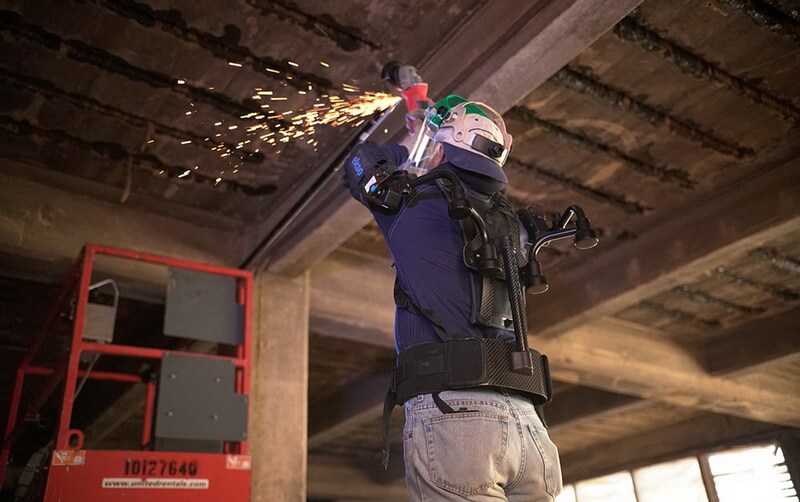
Objectively, IoT applications for wearables in manufacturing could be the most useful compared to other industries. IoT wearables provide better security for the workers, elevate productivity and even make the impossible for human capabilities possible.
EksoVest by Ekso Bionics is a good example. The company’s exoskeletons have already been tested on 15 Ford’s assembly lines.
EksoVest helps employees perform overhead work, while EksoZeroG takes the load from up to 35 pounds objects and enables workers to do their job without pressure, literally. Both wearable systems significantly reduce injury risks and improve durability, hence, the performance on the assembly line.
RealWear
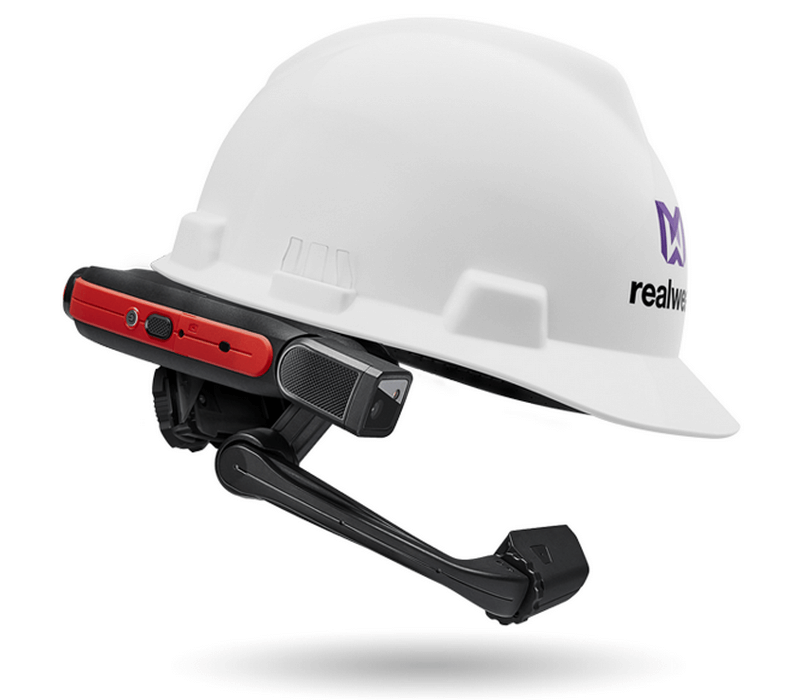
Realwear is basically a wearable tablet attached to the helmet that provides engineers, assemblers and other industrial workers on sight with quick access to necessary information and connectivity hands and hustle-free. It’s highly protected from industrial dust and noise, water and drop proof.
Realwear wearable is powered by Foresight cloud service that enables a range of remote control and management features. Moreover, it works with AR applications and relies on advanced algorithms for noise cancellation. This speech extraction algorithm enables headset control with normal voice regardless of the level of industrial noise on the side.
Proglove
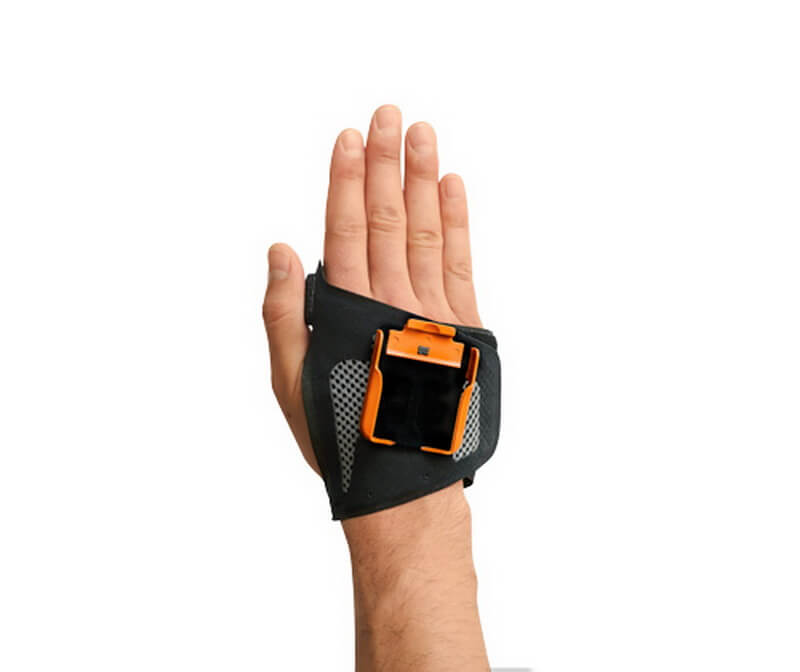
Among industrial IoT smart wearables, connected gloves are extremely useful. They help automate different manual routines, for example, by providing instant data on the materials a worker is touching, and increase workers’ tactile and lifting capabilities. ProGlove is one of such smart IoT wearables.
ProGlove was the finalist of Intel’s Make It Wearable competition. This smart IoT glove is equipped with a range of sensors. They can read the surfaces a wearer touches, recognize the objects and immediately provide all important information on them, such as voltage or temperature, where to find a replacement part, how to install it, etc.
Additionally, the wearable has a barcode reader installed for hands-free scanning. These features allow ProGlove to help assemblers quickly navigate through the space they are working in, make decisions faster, thus, improving efficiency and security on the premises.
WorkerBase
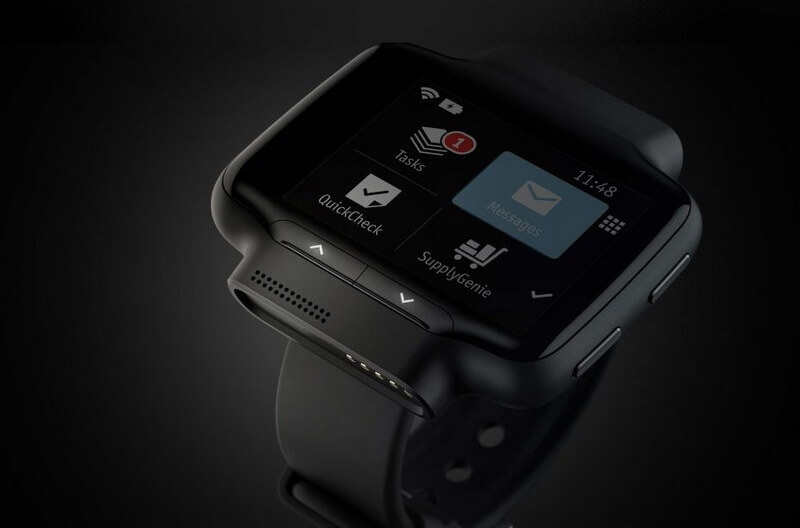
Smartwatches are, probably, the most popular consumer IoT wearables. However, hardly would Apple watch or Garmin be very helpful or even could survive the tough industrial environment of assembly lines or a repair shop.
In contrast, WorkerBase smartwatch was originally designed for a tough environment and makes an ideal example application of IoT in logistics. It has diverse features, such as instant scanning, video and photo documentation, integration with manufacturing systems and apps, logistic control, pop-in instructions and task management.
Connected to administration and data analytics, WorkerBase is a valuable tool in management’s hands and on employees’ wrists.
Spes and Grassi
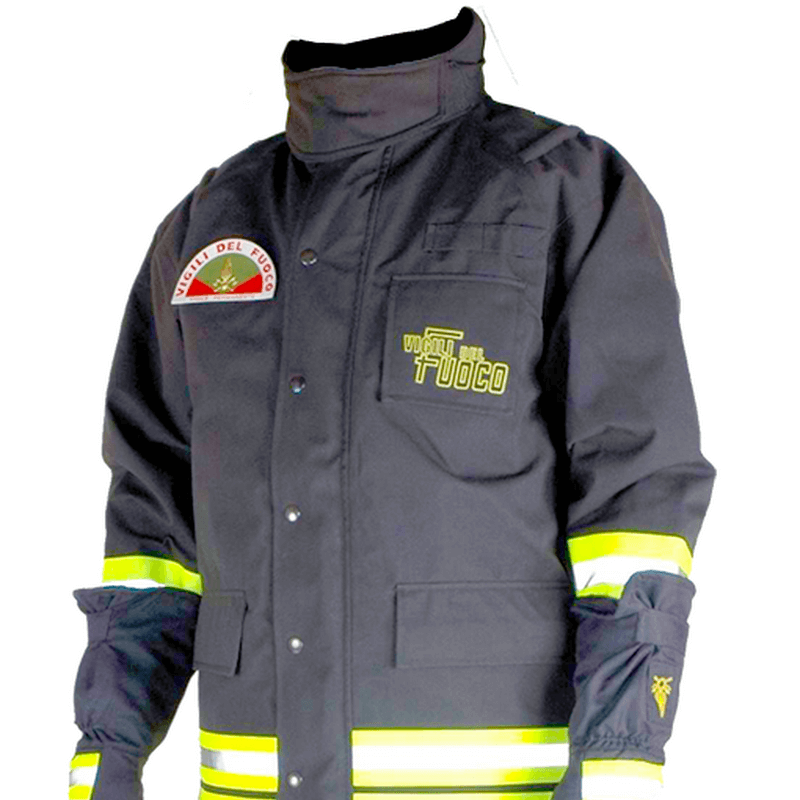
Spes the technology company and Italian protection clothes manufacturer Grassi joined forces in the startup initiative to create an ultimate IoT wearable for the industrial environment. The companies have built a smart sensor jacket which could provide safety for the wearers.
The jacket tracks a range of human body parameters such as hydration and body position as well as environmental conditions, for example, the concentration of harmful gases in the air. It’s equipped with emergency signals and a range of features to report a user about the danger and help avoid it. Additionally, it’s connected to the control room for guided management and sending data in real-time for remote monitoring and analytics.
At Digiteum, we have extensive experience in both IoT software design and development in general and software development for wearables. Check our IoT and data analytics projects in energy, healthcare, wellness, entertainment, production, IT and other areas.
Whether you are looking for a software development company to help you launch an ambitious IoT project, develop a complex enterprise IoT system with multiple connected devices, spaces and users, or seek consultation from experienced architects and developers for your wearable application, we can provide qualified help. Contact our team and request a free consultation.




